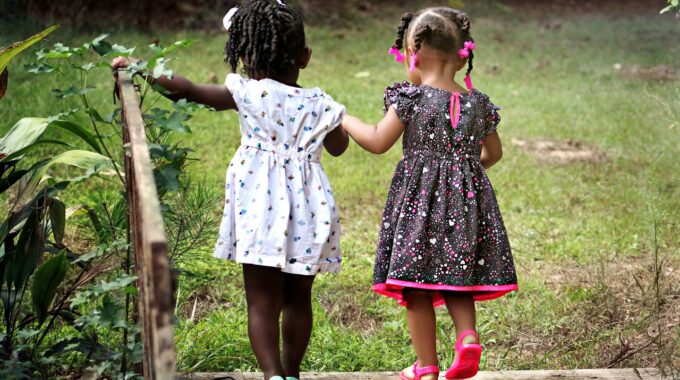Discover how data can help small businesses identify and address employee retention issues by providing deep insights into workplace dynamics.

Diversity, Equity and Inclusion Starts Early
Adding DEI to the lesson plan
As students across the U.S. settle in to back to school classroom routines, it’s essential to acknowledge the pressing need to fold diversity, equity and inclusion (DEI) into their lesson plans.
Kids enter the classroom well-equipped to celebrate their classmates’ fancy new shoes and respectfully inquire about where they got their trendy backpack and outfit. Meanwhile, many kids are not as equally prepared to celebrate, navigate or inquire about more intrinsic differences between themselves and those around them.
Facilitating an open and positive dialogue geared towards embracing DEI in the classroom and at home empowers the youth with curiosity, confidence and kindness. Prioritization of DEI education early on begets empathetic, critical thinkers who mature into respectful open-minded adults.
Early DEI begins at home
The earlier DEI is explicitly identified as a value by their families, the better. From the very start everything a child thinks or says or does is processed through their personal cultural lens. Their cultural identity is something passively internalized and passed down through the generations. Cultural customs, dress and cuisine can be taught but definitive culture is a thing that just is, an intangible that we’re seldom aware of.
A preschool-aged child as young as 2 can notice gender and racial differences. By 2 ½ they begin to apply gender labels and color vocabulary to describe skin tones. By age 3 kids notice differences in ability and by 4-5 kids may grow fearful of differences.
That child’s culture plays a big part in his values and beliefs about, among other things, gender roles, family structures, disabilities, etc. That preschool-aged child carries with him his own set of culturally supported beliefs into the classroom as he matures to school-aged status. Before that point, preschoolers are taking their cues primarily from parents and loved ones at home.
Parents must take ownership of introducing acceptance and inclusion as cultural values. Regular age-appropriate conversations, modeling target behavior and encouraging self-acceptance and acceptance of others are good places to start.
Kids don’t intuitively know how to talk about differences. Their approach may be bold and sound offensive to adult ears. But when kids are shushed, redirected or met with disapproving glares they learn to be silent and ashamed instead of open and compassionate. Or worse yet as they grow older, they take cues from peers or media stereotypes and contribute to a worsening misrepresentation of the world around them.
The conversations to help children navigate these conversations are tough but essential. The D and the E talks may feel as uncomfortable as the “birds and the bees,” however resources are available to help parents navigate potentially difficult terrain.
Diversity and Culture in the classroom
Early childhood educators understand the importance of introducing concepts early in a child’s education. Parents can proactively ask their children’s early childhood providers about their approach to DEI.
Once a child arrives on the elementary scene the evolution of their positive self-concept stems from their ability to honor and respect their own family’s culture and to have others acknowledge and respect their cultural identity too. If their classroom (classmates, teachers, school culture) does not validate their cultural experience the child may experience shame, low self-worth, and feelings of unimportance.
Parent and Teacher Support of DEI Matters
Parents can advocate for diversity and inclusion in the classroom by speaking directly to school staff, teachers, and the school board about the importance of diversity in education. Toolkits for teachers can help them learn more about Race Equity Planning and “building district-wide commitment for advancing racial equity plans and leading systems change to support positive outcomes” for their students and find other resources to help them build more inclusive classrooms.
Color-blindness Preserves Whiteness as the Default
Historically the cultures of most American schools are derived from White Anglo-American values. Educators within those school systems have long believed that proceeding in a colorblind/culture blind fashion is the best course of action.
 Quote/Image credit: Minnesota Education Equity Partnership (MnEEP.org) School Climate and Racial Equity Toolkit
Quote/Image credit: Minnesota Education Equity Partnership (MnEEP.org) School Climate and Racial Equity Toolkit
Unconscious Bias in the Classroom
Current-day research has evidenced that feigning blindness to obvious differences reinforces unconscious bias and is a barrier to genuine appreciation and celebration of differences.
In order to wholly appreciate every student, teachers must engage in culturally responsive teaching, ask questions and maintain an open dialogue about each family’s cultural values. All educators can learn how to interrupt bias and the skills they need to build a classroom environment where students see themselves in the curriculum, feel validated and are included.
Acknowledging color and culture is critical to helping bridge divides between fellow students and the world as a whole. Color and culture set each child apart and affords each child a unique perspective to add to the enrichment of the school. Diverse schools include not only varied racial and ethnic groups but also recognize differences in socioeconomic status, religion, literacy, ability, gender, background, etc.
Preeminent EdD programs encourage future teachers to value the differences that make a student special and employ them as strengths in the classroom environment. Diversity research by the Century Foundation showed that the presence of differing and diverging perspectives can promote positive learning outcomes in K-12 and beyond.
The Impact of DEI Education From the Classroom to the Boardroom
By the time the children of DEI savvy households and classrooms grow to be DEI savvy adults, they will join the workforce ready to interact with individuals of a variety of backgrounds and mindsets, with the benefit of having been exposed to diverse perspectives from an early age.
They will bring with them the creativity born from decades of exposure to different ideas and experiences, and their employers will value them all the more for it.
Diversity jolts us into cognitive action in ways that homogeneity simply does not.” —Scientific American via American University
Diversity Education Builds Critical Skills
Having diversity not only present but acknowledged in the classroom promotes the consideration of points of view beyond the culture at home and amongst close friends. It facilitates critical thinking and can inspire a genuine examination of long held beliefs.
Children who learn about Diversity, Equity, and Inclusion (DEI) from a young age develop important skills and perspectives that can make them more socially aware as they grow up, developing skills that will help them in the workplace:
- Increased Empathy: Learning about different cultures, backgrounds, and perspectives can foster empathy and understanding in children. They are more likely to appreciate the experiences of others and be kinder and more inclusive.
- Better Communication Skills: Teaching DEI encourages open and respectful communication. Children who are exposed to diverse viewpoints and experiences may become better at listening, asking questions, and engaging in meaningful conversations.
- Critical Thinking: DEI education can stimulate critical thinking as children learn to question stereotypes, biases, and unfair treatment. This can help them become more discerning and critical of societal norms.
- Conflict Resolution: Children who understand DEI are better equipped to handle conflicts related to identity and difference. They can mediate conflicts and find constructive solutions.
- Cultural Competence: Learning about DEI helps children become more culturally competent. This can be especially important in an increasingly diverse world where cross-cultural interactions are common.
- Leadership Skills: Individuals who have a strong foundation in DEI may be better prepared for leadership roles in the future, where the ability to work with diverse groups and understand the needs of various stakeholders is crucial.
- Reduced Prejudice: Early exposure to DEI concepts can help reduce prejudices and biases, making children more open-minded and accepting of others.
- Social Awareness: Children who learn about DEI are more aware of social justice issues and may be more inclined to engage in activism, volunteer work, and efforts to promote positive change.
It’s important to note that the impact of DEI education on children’s development can vary depending on how these concepts are taught and reinforced. Effective DEI education should be age-appropriate, engaging, and integrated into the curriculum. It’s not just about teaching tolerance but encouraging a genuine understanding and appreciation of diversity.
Future generations unencumbered by outdated “colorblind” upbringings will instead live color brave, speak truth to power, and never have to explain why DEI matters.
Sources
- American University, “The Benefits of Diversity and Inclusion in the Classroom,” July 2019.
- NAEYC, “Valuing Diversity: Developing a Deeper Understanding of All Young Children’s
Behavior,” Barbara Kaiser, Judy Sklar Rasminsky, January 2020. - Next Pivot Point, “Why Talking to Our Children about Diversity & Inclusion is Important, Yet
Hard,” Julie Kratz, January 2020. - Penn State Extension, “We are different, we are the same: Teaching young children about
diversity,” - Whole Child Counseling, “How To Talk With Kids About Diversity and Inclusion,” September,
2022.




